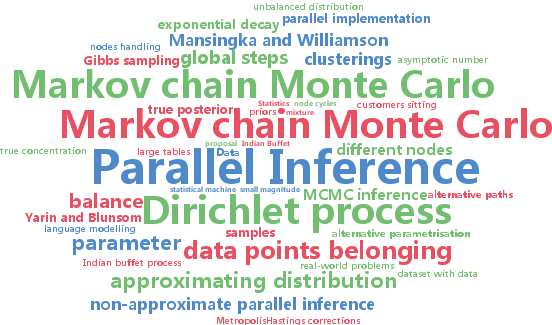language modelling
-
Jan Botha and Phil Blunsom
Compositional Morphology for Word Representations and Language Modelling (pdf)
This paper presents a scalable method for integrating compositional morphological representations into a vector-based probabilistic language model. Our approach is evaluated in the context of log-bilinear language models, rendered suitably efficient for implementation inside a machine translation decoder by factoring the vocabulary. We perform both intrinsic and extrinsic evaluations, presenting results on a range of languages which demonstrate that our model learns morphological representations that both perform well on word similarity tasks and lead to substantial reductions in perplexity. When used for translation into morphologically rich languages with large vocabularies, our models obtain improvements of up to 1.2 BLEU points relative to a baseline system using back-off n-gram models.
-
Yarin Gal and Zoubin Ghahramani
Pitfalls in the use of Parallel Inference for the Dirichlet Process (pdf)
Recent work done by Lovell, Adams, and Mansingka (2012) and Williamson, Dubey, and Xing (2013) has suggested an alternative parametrisation for the Dirichlet process in order to derive non-approximate parallel MCMC inference for it work which has been picked-up and implemented in several different fields. In this paper we show that the approach suggested is impractical due to an extremely unbalanced distribution of the data. We characterise the requirements of efficient parallel inference for the Dirichlet process and show that the proposed inference fails most of these requirements (while approximate approaches often satisfy most of them). We present both theoretical and experimental evidence, analysing the load balance for the inference and showing that it is independent of the size of the dataset and the number of nodes available in the parallel implementation. We end with suggestions of alternative paths of research for efficient non-approximate parallel inference for the Dirichlet process.

